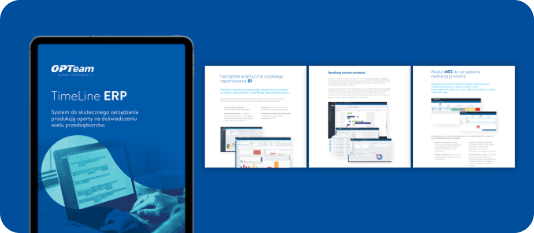Cybersecurity
System and data security
Build a comprehensive IT security system in an era of growing threats in the virtual world. Guarantee the highest level of resource protection at both the physical and software levels. Leverage the support of IT security specialists to effectively manage threat-related risks and avoid falling victim to attacks. The dynamically evolving cyberthreat landscape forces organizations to continually develop their security systems. With a wide range of cybersecurity solutions, we help ensure protection against threats at every level where such protection is essential.

Create a cyber-secure workplace for your organization's team

Ensure a highly available IT infrastructure
IT security means not only resistance to attacks, but also the ability to maintain high availability of the resources and services the environment provides to its users. That's why we help protect IT systems not only from cybercriminals but also from random events and unexpected failures. We provide solutions that ensure continued operation, regardless of the circumstances.
See the many benefits of a good IT security strategy
Ensure the security of IT systems by effectively protecting them from cyberthreats
We provide a wide range of cybersecurity services to businesses, institutions, and universities. We have a team of qualified experts who provide advice and support in analyzing and assessing the current situation, identifying possible threats, and assessing the level of existing security measures. We help improve existing IT security strategies, as well as build them from scratch using the latest methods and tools, as well as applicable legal regulations.
 Stage 1
Stage 1
 Stage 2
Stage 2
 Stage 3
Stage 3
 Stage 4
Stage 4
 Stage 5
Stage 5
 Stage 6
Stage 6
Focus on effective IT system security
IT security mechanisms must not hinder daily work, but must also create a sterile and secure environment for achieving business goals. As users, we are fully aware of the challenges posed by new, increasingly sophisticated forms of attacks. As administrators, we know how to protect against them through cybersecurity services.

Data encryption
Minimize the risk of data leakage by encrypting communication between infrastructures.
Application protection
Ensure the reliability of secured web applications and cloud environments, which are particularly vulnerable to attacks.
Threat awareness
Increase security awareness within the organization through education about and practices for working in the digital world.
Security assessment
Verify that the IT environment is properly secured and free from known vulnerabilities.
Network verification
Analysis of wired and wireless network configurations and precise measurements to verify the security level.
Disaster recovery plan
Develop a set of tools and procedures necessary to restore systems to operation in the event of a global network outage.
Create a comprehensive IT security system for your organization
Managing IT security within your organization requires a range of tools that provide insight into your infrastructure and ensure the appropriate functionalities and mechanisms necessary to maintain high-quality and clean systems. Together with our team of specialists, we will select solutions that will help you achieve a high level of protection within your cybersecurity service.
Financial sector
Protection of personal, financial, and transactional data, as well as payment systems, in accordance with strict regulatory requirements.
Health sector
Protection of sensitive data, medical records and test results, and systems to maintain the operation of medical facilities.
Public administration
Protecting citizen data, tax information, and identification numbers from being compromised and made public.
Industry
Securing production line and supply chain systems and equipment to ensure business continuity.
Energy
Protection of IT and technical systems to ensure the stable operation of critical infrastructure, such as power plants and waterworks.
Higher education
Protection of student data and IT system security to ensure the continuity of educational and research services.
Articles
See the latest articles, expert advice, interviews, and reports related to the digitalization of processes and the latest technologies.
Although the EU NIS2 directive has been in place in European law for almost (...)
An advanced cybersecurity system is a suite of tools and procedures (...)

Frequently asked questions about cybersecurity
Cybersecurity is a set of rules, methods, and tools designed to comprehensively protect an organization from online threats – both the IT infrastructure, including software, operating systems, and processed data, as well as users exposed to hacker activity. Cybersecurity practices encompass both prevention, i.e., preventing incidents, and handling incidents in the event of their occurrence in accordance with applicable laws, such as the GDPR, NIS2, and ISMS.
Cybersecurity involves analyzing the situation to assess the level of security measures in place and potential cyber threats, as well as selecting appropriate safeguards. These actions are primarily aimed at preventing attacks and securing the organization in the event of an attack, to prevent serious information breaches or system disruptions. Therefore, cybersecurity encompasses organizational issues such as procedures, regulations, and training, as well as technical protection measures such as antivirus, firewalls, authentication, and encryption.
A cybersecurity strategy is a plan based on an analysis of an organization's situation and system vulnerabilities, encompassing identification, protection, and response to hacker activity, as well as recovery in the event of a threat. It must be compliant with applicable regulations and tailored to the specific needs of the organization to ensure business continuity, eliminating disruptions or interruptions caused by incidents.
Hacker attacks can lead to data breaches or loss, system disruptions, and organizational disruptions. These incidents can result in financial losses, reputational damage, and legal issues. Therefore, it's crucial to take preventative measures and properly address incidents. Reporting incidents to the appropriate institutions and implementing initiatives, as part of the cybersecurity strategy, to restore organizational stability as quickly as possible.
The number of hacker attacks is growing, and cyber threats are becoming increasingly sophisticated. The most popular continue to include phishing attacks aimed at extorting data, malware exploiting malicious software, ransomware encrypting data to extort ransom, and DDoS attacks that block services. Furthermore, system and security vulnerabilities, lack of authentication, and carelessness stemming from user habits are being exploited. This leads to intrusions and breaches, ultimately destabilizing the organization itself.
To ensure an adequate level of security, it's crucial to build awareness of cyber threats, their consequences, and the associated need for proper protection. Therefore, it's crucial to educate individuals on proper conduct in the digital environment and exercise increased caution, develop security procedures, and implement appropriate safeguards for data, systems, and end users, such as technical security measures, backups, multi-factor authentication, software updates, and refresher training.
The procedures for handling a cyberattack are regulated by law, including the NIS2 directive. According to applicable regulations, the incident must be reported to local law enforcement agencies and cybercrime prevention agencies, such as CERT Polska or the Office for Personal Data Protection. Failure to comply with this obligation carries legal consequences, so it is important to comply in a timely manner. Actions are also required within your own organization, such as informing the IT department to secure resources, identify the type of incident, the scale of the breach, and assess security measures.
Want to know more? Contact us
Let us know your needs and expectations, and our consultant will contact you. Together, we'll choose the best solutions for your business.












